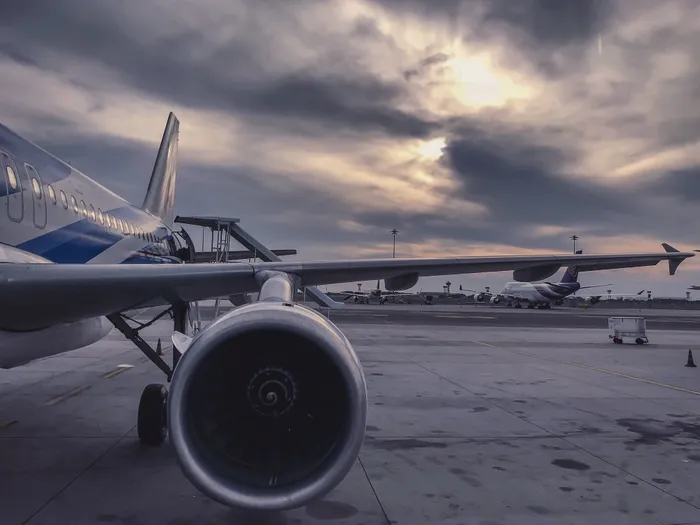African airlines pay more for jet fuel than other global carriers, but remain resilient

Economic, infrastructure, and connectivity challenges are affecting the performance of the African airline industry. Picture: Ahmed Muntasir/Pexels
While the global airline industry is set to make US$23.3 billion net profit this year, African airlines will suffer a combined loss of US$0.5bn.
The International Air Transport Association (IATA) says Africa remains a “difficult market” in which to operate an airline as economic, infrastructure, and connectivity challenges impact the industry’s performance.
Furthermore, while the price of jet fuel typically accounts for 20 percent to 25 percent of airline’s total operational costs, in Africa, it makes up 40 percent of airlines’ operating costs.
IATA’s regional vice president for Africa and the Middle East Kamil Alawadhi, says the “crack” (gap) between the cost of brent crude oil and jet fuel has been “quite high” globally from about mid-2022. In Africa, however, this price difference is about 10 percent higher.
“This is an issue that is hampering African airlines big time because their operating costs immediately go up. It is one of the issues we will be looking into very deeply in 2024. We need to identify why this crack is so big and then try reduce it.”
Despite these challenges, data shows that there is “robust demand” for air travel in the region and, thus, the losses are coming down; next year African airlines are expected to lose US$0.4bn.
Globally, the industry is set to earn a US$25.7bn profit in 2024.
The good news, however, is that Africa’s ‘passenger load factors’ (PLF) – a measure of how much of an airline's passenger carrying capacity has been utilised – has exceeded the pre-Covid levels of 2019 by one percent. The region is only one of two that has seen an improvement in its PLF. The other is Latin America and Carribbean.
Across the industry worldwide, these load factors have not reached 2019 figures so Africa is essentially outperforming the rest of the industry in this regard, Alawadhi says.
When it comes to international air connectivity – the overall level to which an airport is connected to the rest of the world by both direct and indirect connections via other airports, the region is also ahead of the curve as, in September, the global figure was at 90 percent of its pre-Covid levels while Africa is currently at 104 percent.
Ticket sales are fluctuating around 2019 levels and “are where we expect them to be”, he says, adding that passenger traffic in Africa is currently one percent higher than it was in 2019. This is a 13 percent improvement from last year where figures were only at 88 percent of pre-pandemic levels.
“In 2024 we see this growth improving by four percent to 105 percent and then to 113 percent in 2025.”
Demand for air cargo in Africa is also growing with volumes increasing by 2.9 percent in October 2023 – an improvement from a 0.1 percent decline in September. In fact, IATA says carriers in the region benefitted from the strongest annual growth since May (+16.7 percent). Capacity was 9.8 percent above October 2022 levels.
Globally, IATA expects overall revenues in 2024 to rise faster than expenses, strengthening profitability. While operating profits are expected to increase by 21.1 percent – from $40.7 billion in 2023 to $49.3 billion in 2024, net profit margins are set to increase at only 10 percent, largely due to increased interest rates expected next year.
The Association’s November 2023 passenger polling data shows that:
– A third of travellers are traveling more than they did pre-pandemic, with 49 percent indicating that their travel habits are now similar to pre-pandemic. Only 18 percent are travelling less.
– 44 percent say that they will travel more in the next 12 months than in the previous 12 months. Only seven percent say they will travel less and 48 percent expect to maintain similar levels of travel to the previous 12 months.
IOL Business